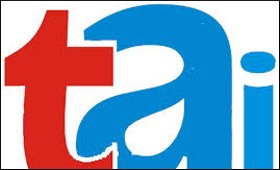|

|
Toy makers urge government to help promote indigenous products
|
|

|
|
| Top Stories |
 |
|
|
|
Avishek Rakshit | 19 Aug, 2015
All it will take for Indian toy makers to capture a major pie of a Rs.13,000 crore ($2 billion) opportunity is a little push from the government by way of promoting indigenisation to replace the flood of imports largely from China, Taiwan and Italy, manufacturers say.
The Toy Association of India (TAI), while pegging the country's market at Rs.13,000 crore during 2015-16, has, however, painted a grim picture as far as Indian manufacturing is concerned.
"Currently, only about 20 percent of the market is served by Indian manufacturers and the rest by import of toys from different countries, mainly from China and Italy," TAI vice president Pawan Gupta said, implying that Indian firms, in the current scenario, will be able to harvest only Rs.2,600 crore from the gigantic pie.
According to TAI, India's overall toy imports increased at a Compound Annual Growth Rate (CAGR) of 25.21 percent between 2001 and 2012 while imports from China and Italy surged at a CAGR of 30 percent and 38.6 per cent respectively during this period.
The Indian manufacturers' base in the segment comprises mostly of some 4,000 micro-medium firms. Seventy-five percent of these are in the unorganised sector, thereby limiting their scope to upscale production or compete with global brands.
"Competitive countries like China have humongous manufacturing capacities and they flood the markets with their products," he said.
Lack of adequate finance and distinct clusters for toy manufacturing and low level of product conceptualisation and design have been cited as the primary impediments for the industry.
Additionally, hurdles in procurement of critical raw materials have been highlighted as plaguing the Indian small-scale toy makers.
Gupta said the government needs to design simpler procedures for indigenous toymakers to raise capital.
"The success of SMEs in the toy industry can grow manifold if they start working in self-sufficient clusters in certain regions", he said.
Reputed toymaker Funskool echoed the need for a change in the government's outlook to boost the industry.
"For toymakers to produce in India and join the Make in India campaign, fundamental changes in the way the government looks at the toy industry is needed", Funskool (India) CEO John Baby told media.
The company highlighted installation of proper infrastructure support like R&D, tool-making facilities and testing labs, among others, to enable the growth of indigenous toy manufacturing.
While the sector at present employs around three million people at various skill levels, Baby said the present labour laws do not support the industry to undertake high volume one-run production.
The industry further highlighted the health hazards children may be exposed to when the quality of the materials in the toys are compromised for pricing.
"The cheaper imports of toys, especially from markets like China are available in the market at a lesser price, but their quality is a matter of concern," Gupta said.
Further, while many global brands are in the process of making their India entry, which will give rise to further innovation and boost the economy, an existing problem has been that most imported toys don't cater to the needs of Indian children.
"Domestic manufacture also ensures that the Indian buyers get quality and safe toys for their children at affordable prices", the Funskool official said.
But cheaper imports from the land of the Hans and Tangs alone cannot be blamed for endangering the health of children.
Among the local manufacturers in India, about 59 percent are still focussing on the production of cheap and unbranded toys, thereby compromising on quality.
"In the future it is expected that these companies will shift towards branded toys as well to stay competitive with international companies," TAI's Gupta said.
"The coming times are really bright for the toy industry", Mayank Aggarwal, director of Playwell Implex, a toy distribution company, told reporters.
He said the industry may touch the Rs.13,000 crore mark by the end of 2015 on account of increasing consumerism and spends from a rapidly expanding middle-class that could comprise over 200 million people by 2020.
"The market size is increasing by at least 20 to 25 percent", Aggarwal told agency.
India's toy industry caters to an estimated 304.8 million children in the 0-12 age group years and 50 million babies in the 0-2 age group.
|
|
|
| |
|
|
|
|
|
|
|
|
|
|
|
|
|
|
| |
| Customs Exchange Rates |
| Currency |
Import |
Export |
US Dollar
|
66.20
|
64.50 |
UK Pound
|
87.50
|
84.65 |
Euro
|
78.25
|
75.65 |
| Japanese
Yen |
58.85 |
56.85 |
| As on 13 Aug, 2022 |
|
|
| Daily Poll |
 |
 |
| PM Modi's recent US visit to redefine India-US bilateral relations |
|
|
|
|
|
| Commented Stories |
 |
|
|
|
|
|
| |
|